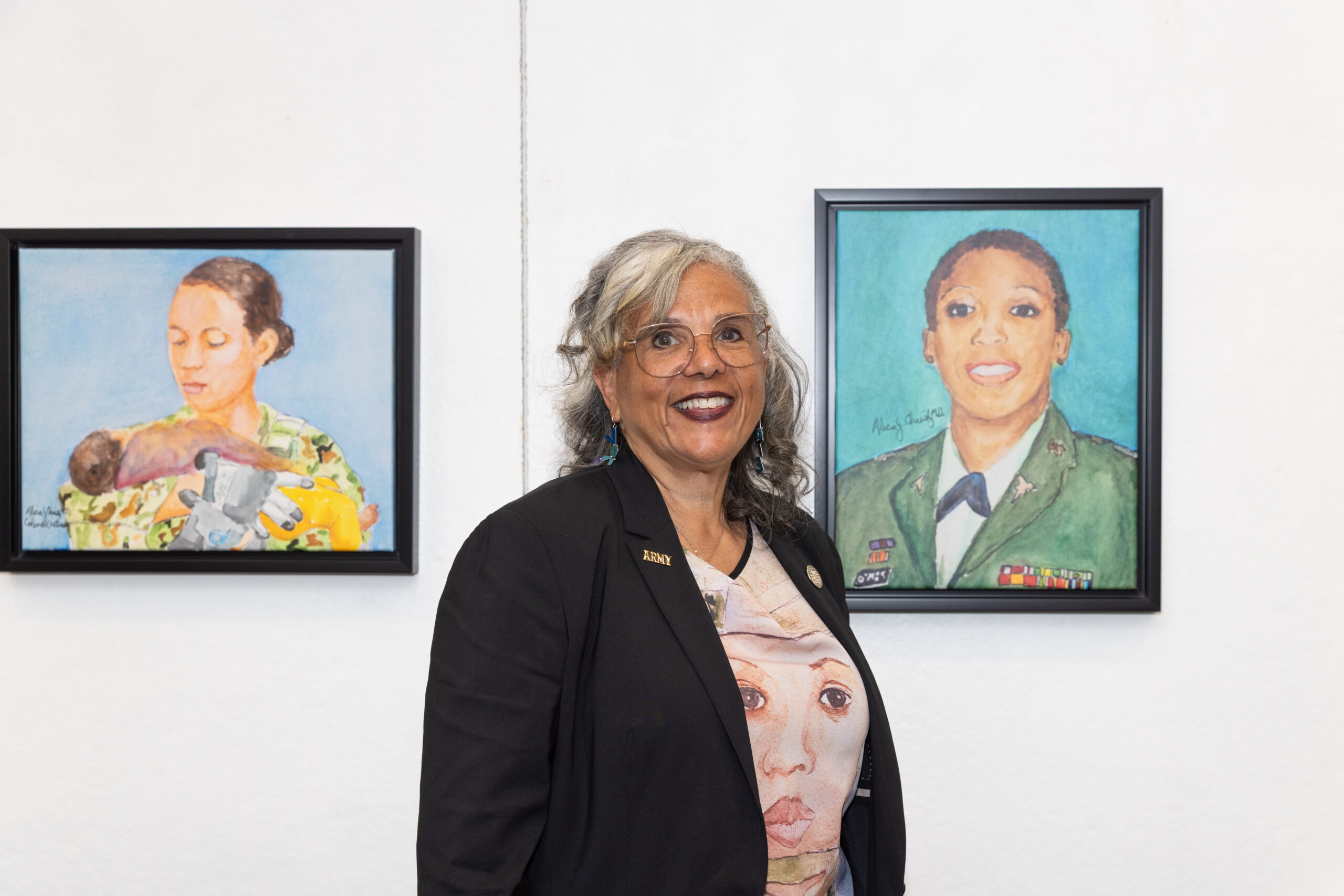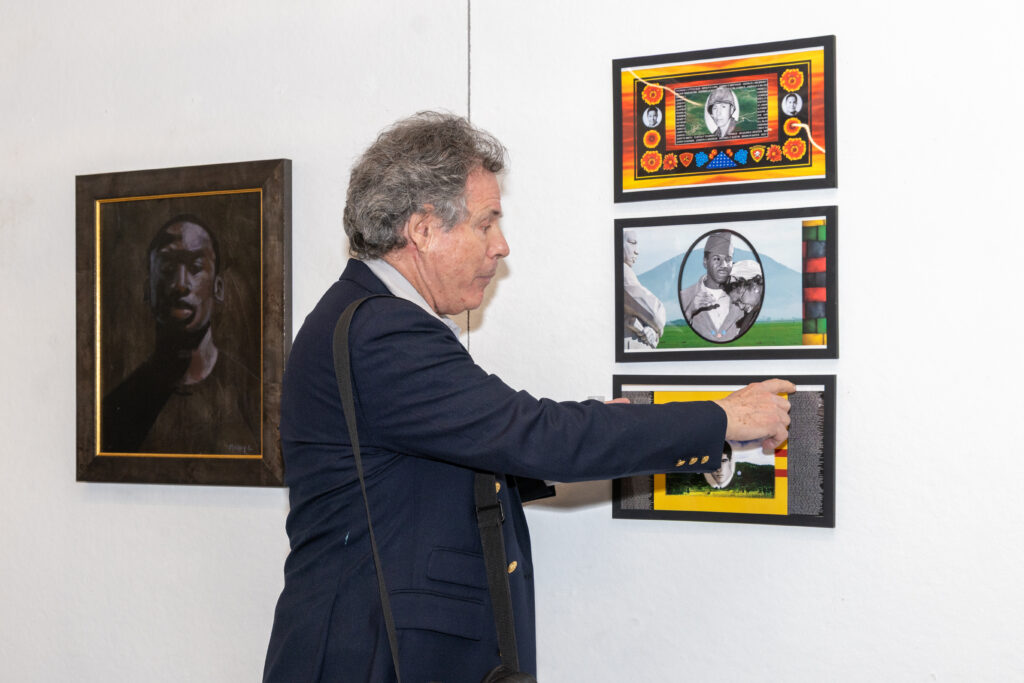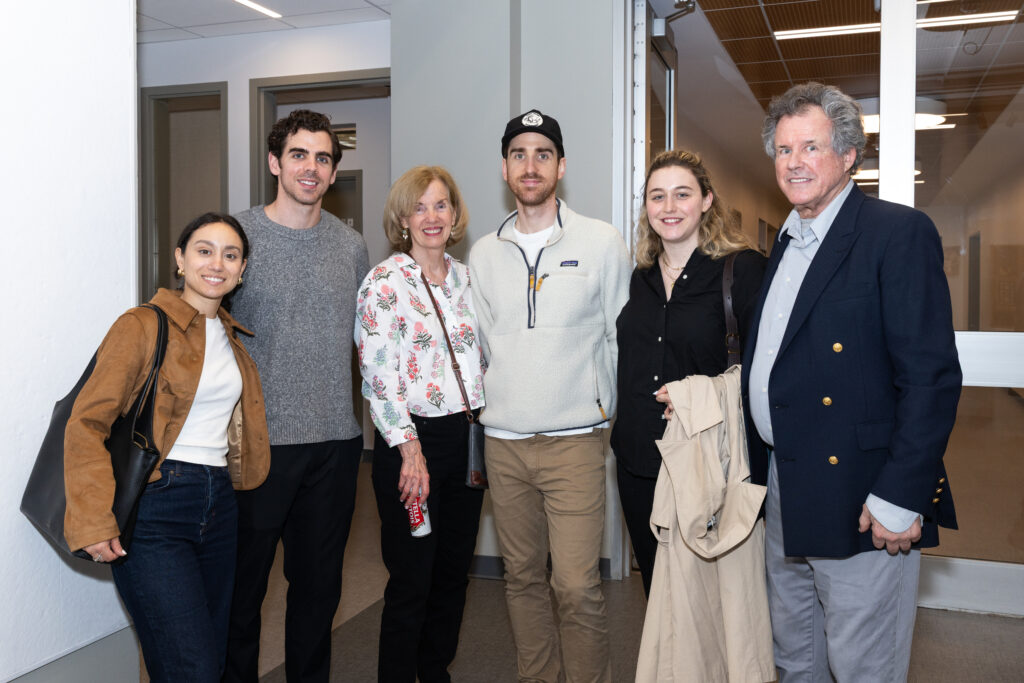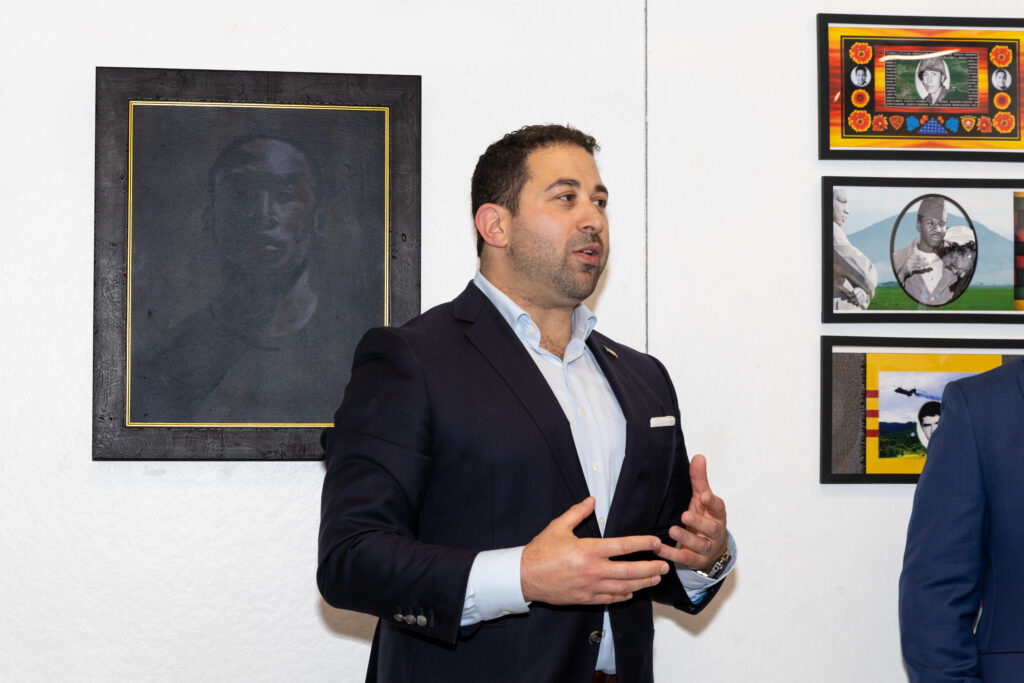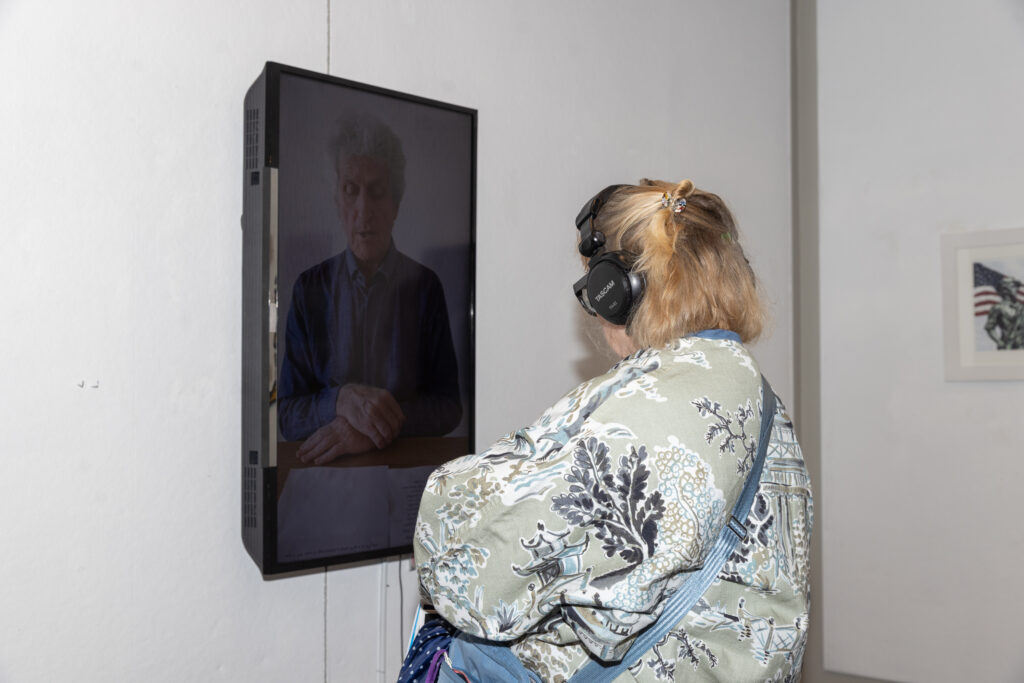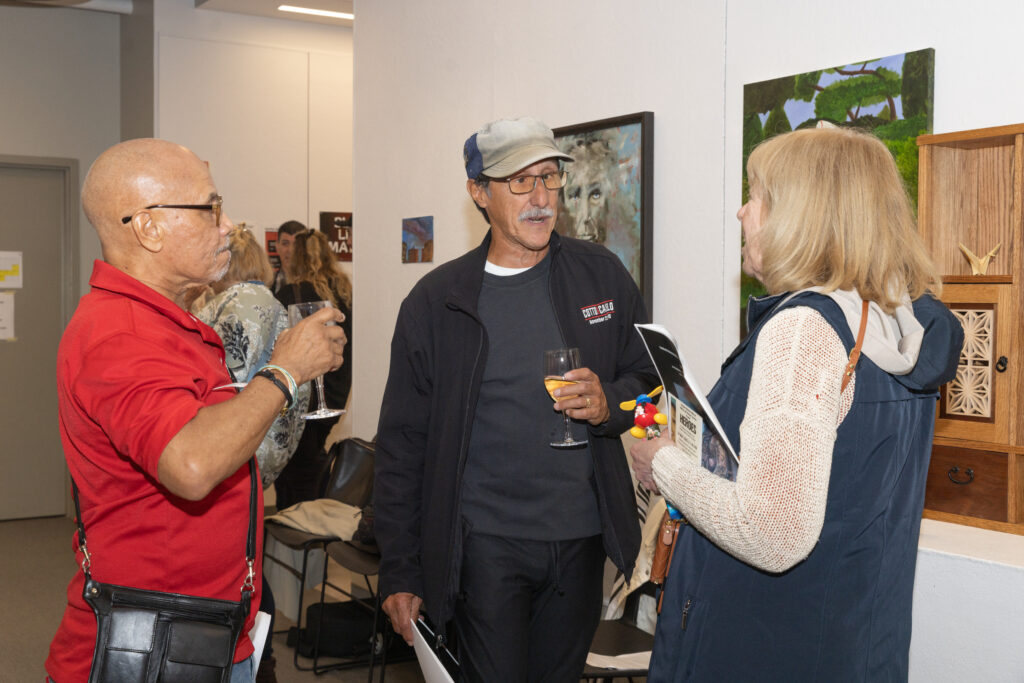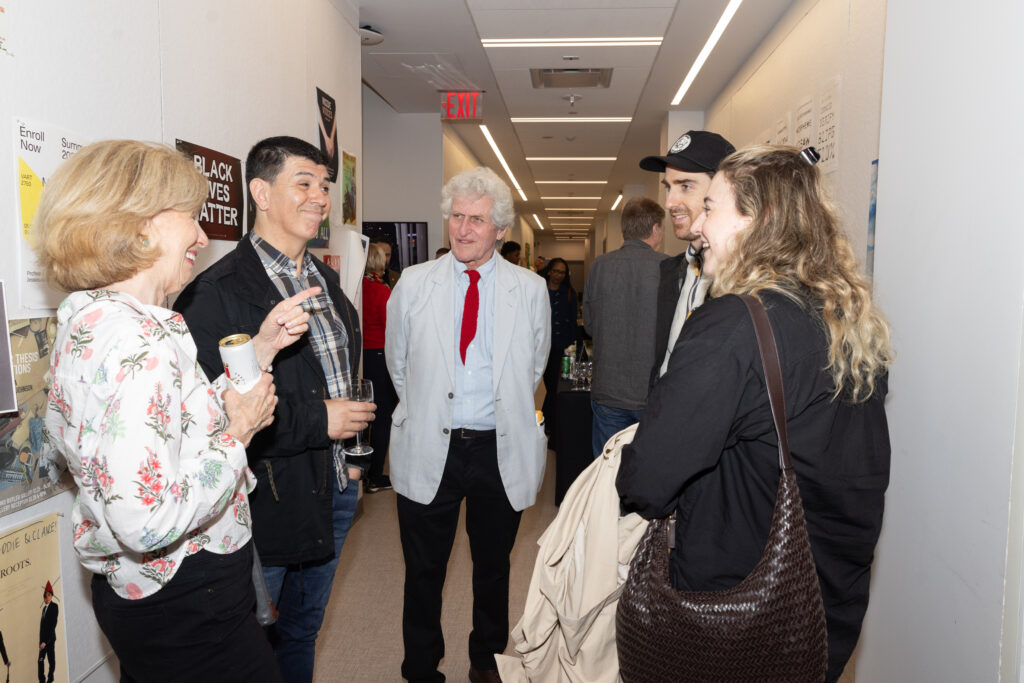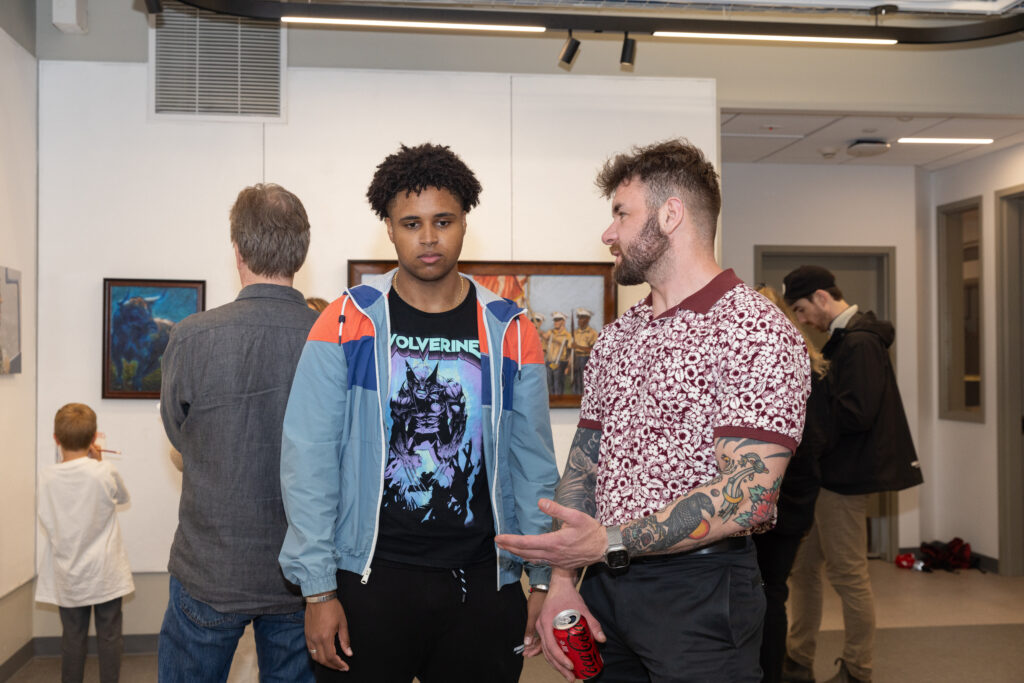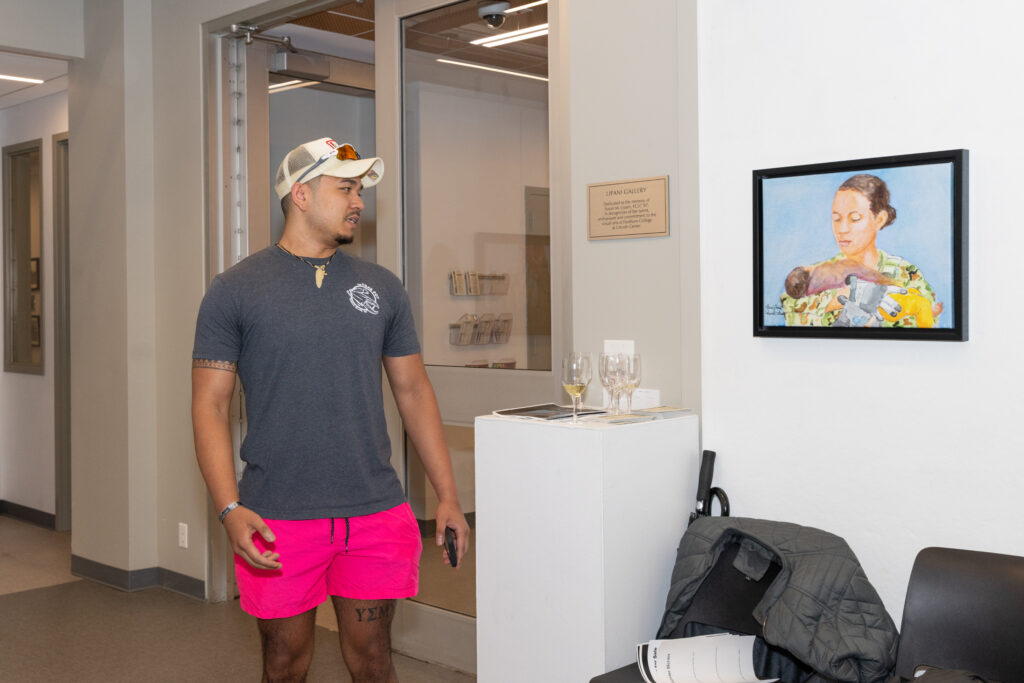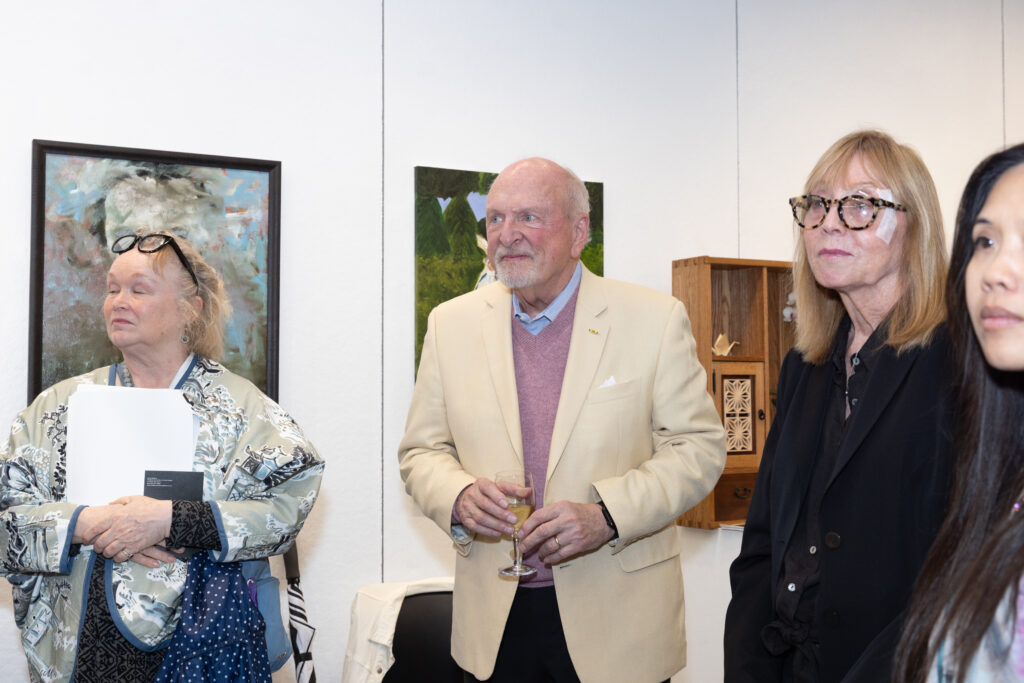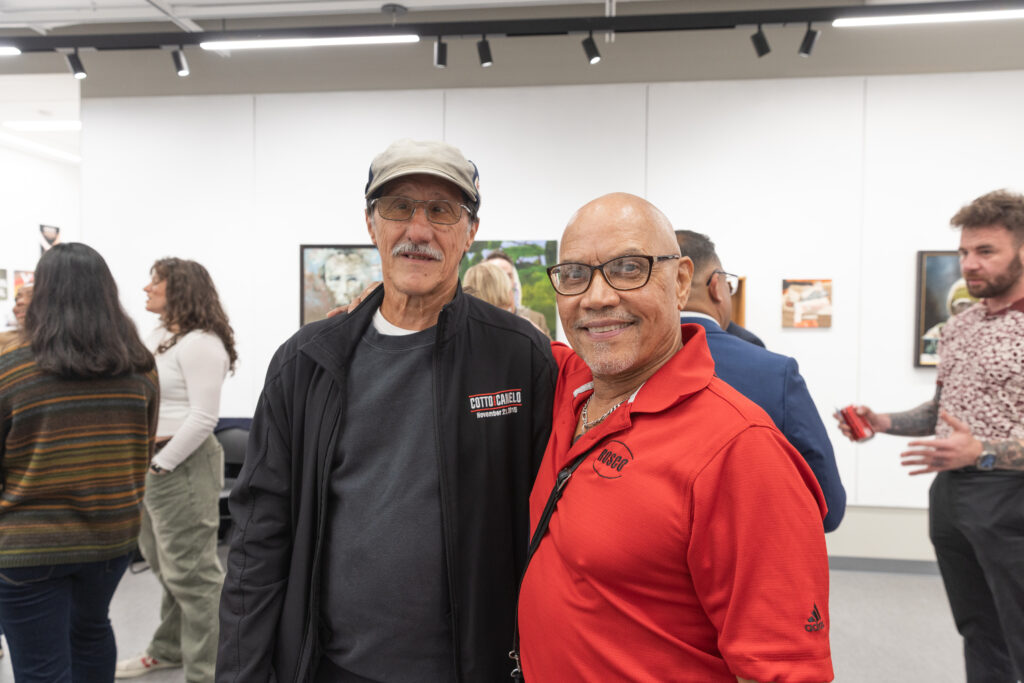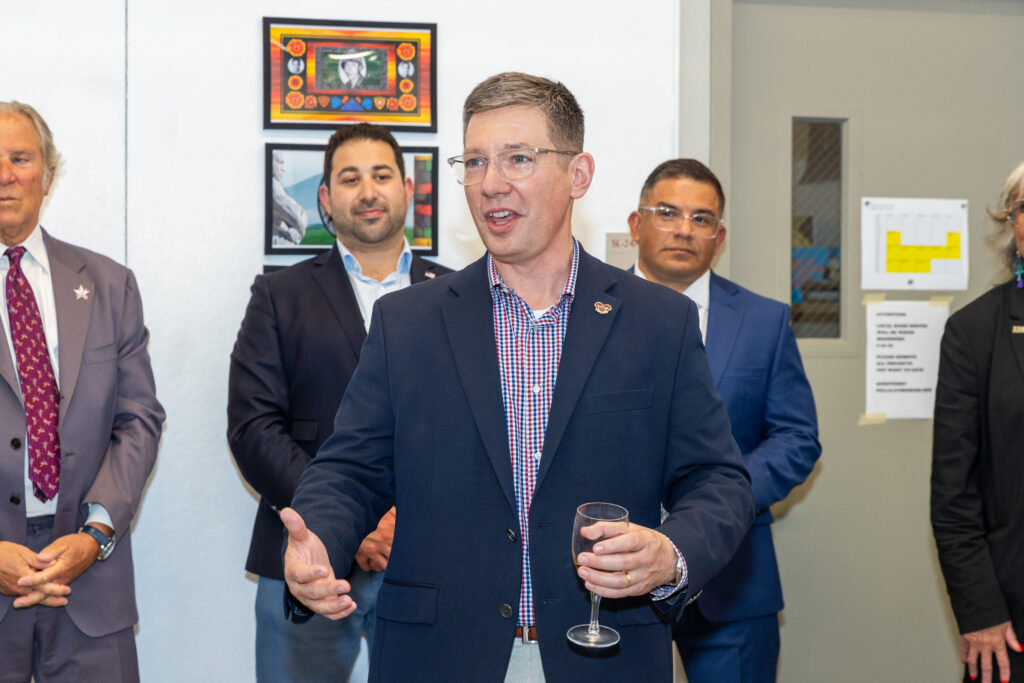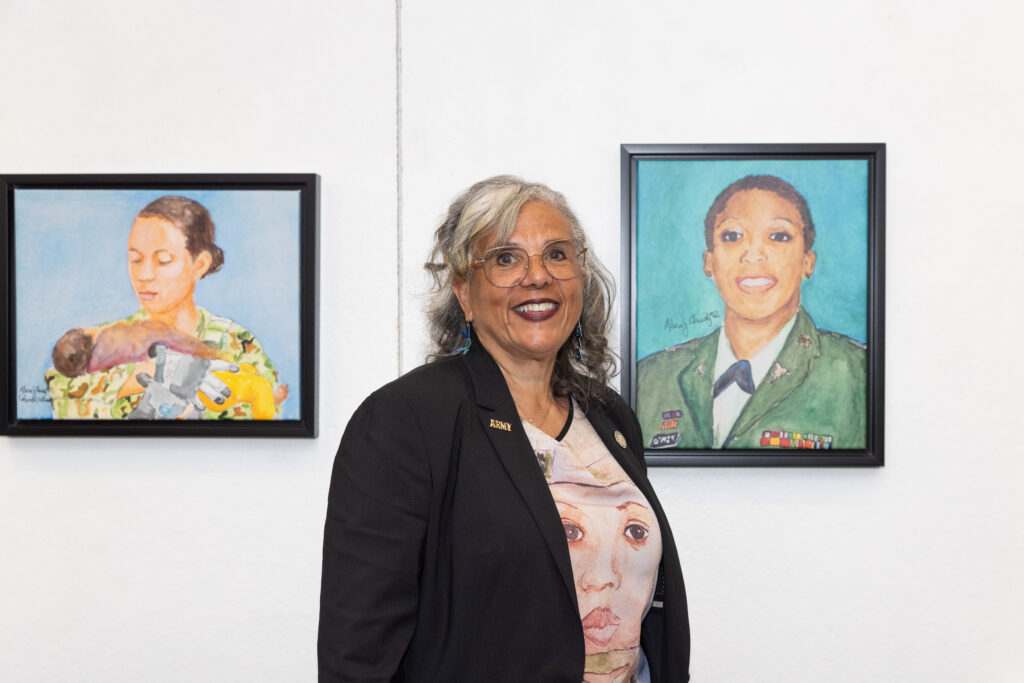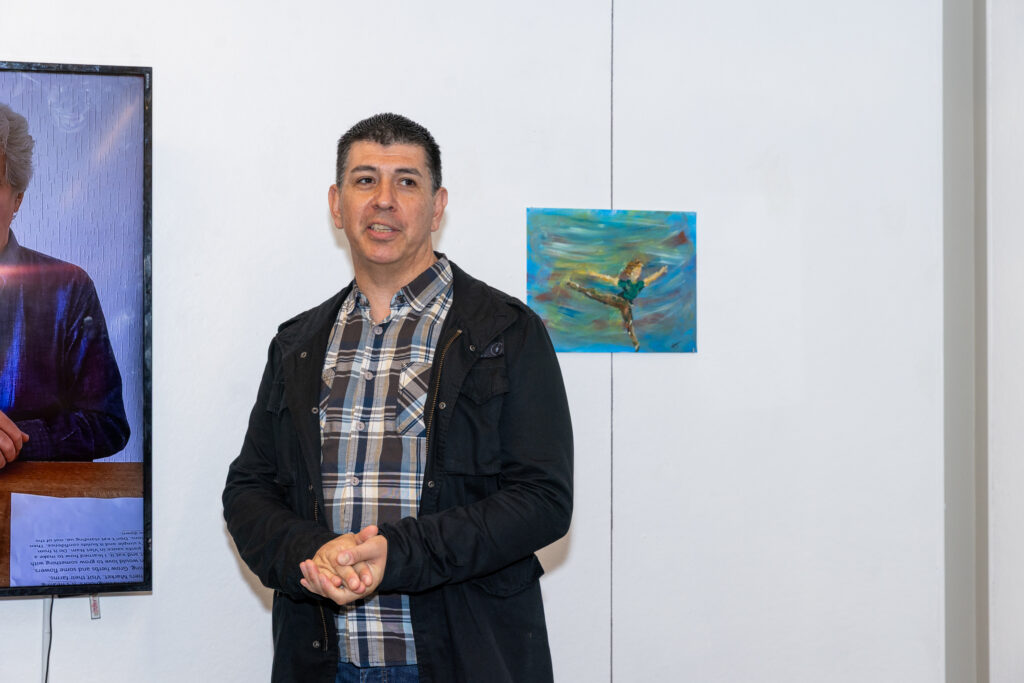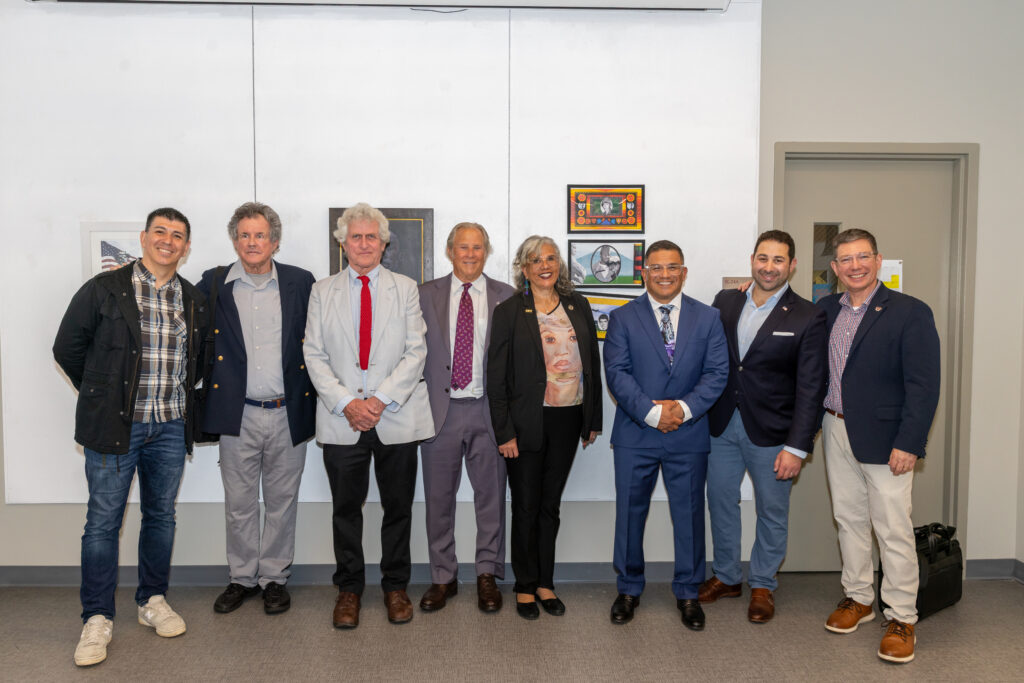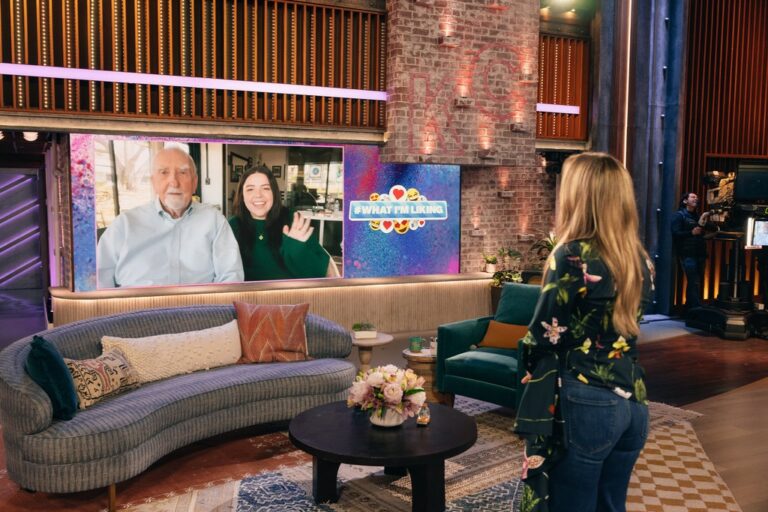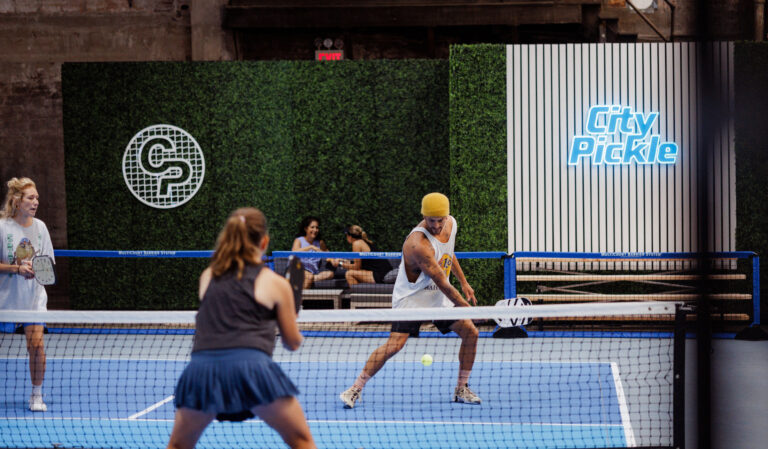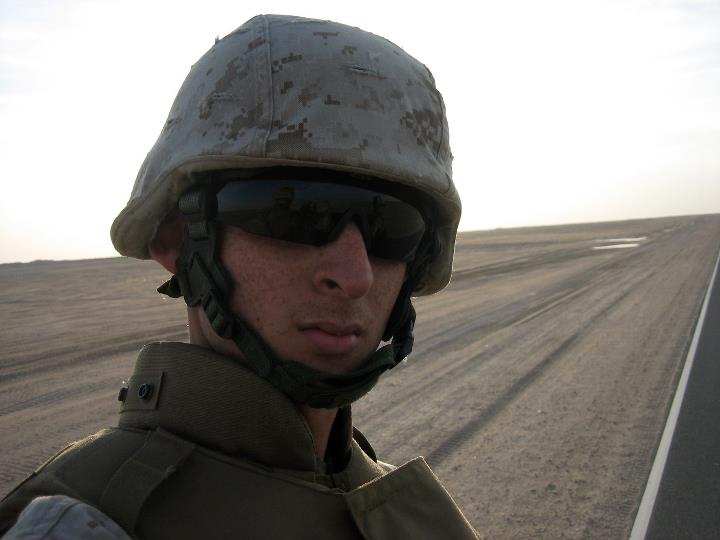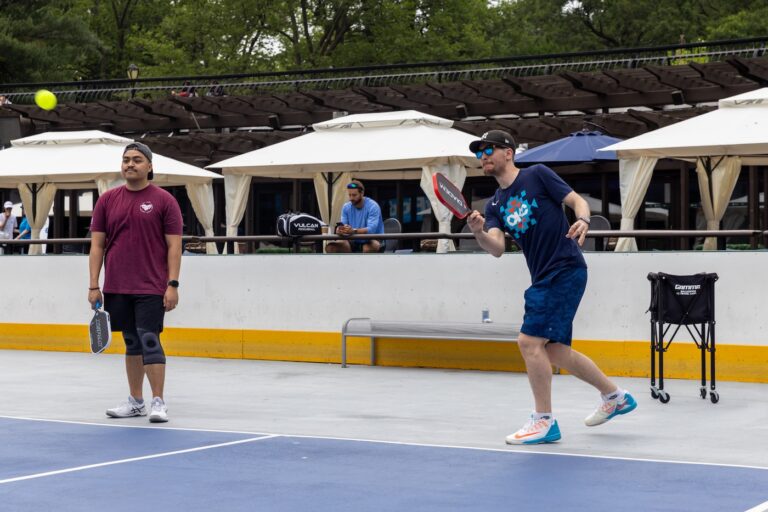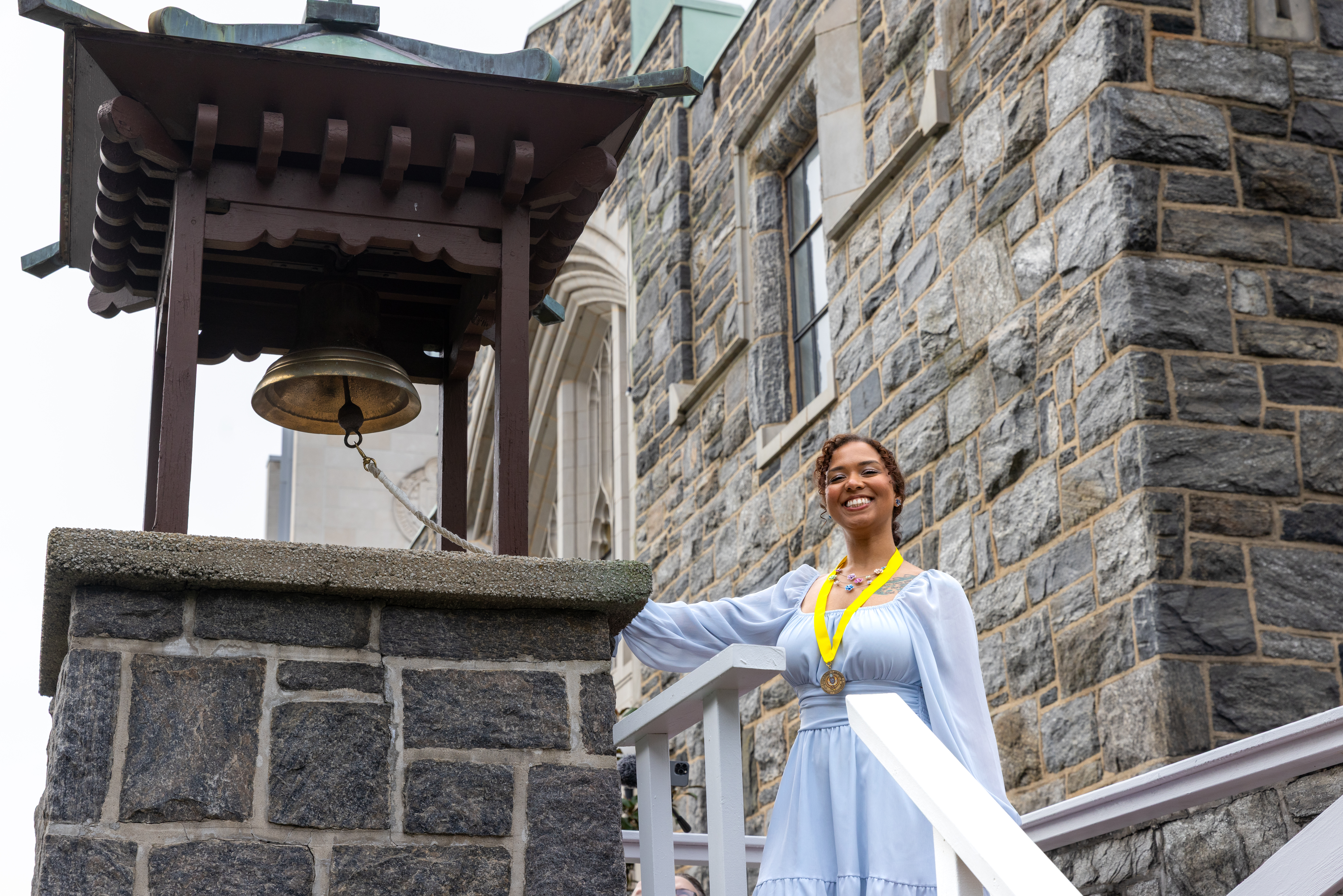HEROES Exhibit at Fordham Highlights Healing Power of Art for Veterans
On the evening of May 14, a quiet gallery space at Fordham University’s Lincoln Center campus came alive with color, memory, and meaning as dozens gathered for HEROES, an art exhibit and panel discussion showcasing the creative works of veterans from the Fordham Veterans Workshop.
Since its founding in 2017, the workshop, led by artist Steve Alpert, has offered a supportive space for veterans of all eras to explore their experiences through painting, storytelling, and community. What began as a small initiative to give veterans a creative outlet has become a powerful tool for healing and connection.
Among the featured artists was Dr. Alicia Christy, a retired Army veteran, author, and physician. Her striking watercolor portraits honored fallen female service members, including Marine Sgt. Nicole Gee who was among 13 U.S. service members killed during the U.S. evacuation from Afghanistan in August 2021. Just days before her death, Gee posted a photo on Instagram of herself cradling an Afghan infant with the caption: “I love my job.” Christy’s painting brought that moment to life.
For Sam Breckinridge, a Fordham student veteran pursuing a degree in social work, the piece was more than moving—it was personal.
“As I walked in perpendicularly to the artists on the back wall, I turned to my left to face them while they spoke, and I immediately clocked the image of Sgt. Gee hanging there next to Alicia’s other art pieces,” he said. “Initially, I couldn’t take my eyes off it—it made me immensely happy to see her honored that way.”
Breckinridge had served with Sgt. Gee, before her deployment to Afghanistan. Just days before the event, he and a fellow Marine had visited her gravesite at Arlington National Cemetery. Though they’d requested no special treatment, they were quietly ushered through by those who recognized the weight of their visit.
“We just wanted to see our friend and sister to tell her that she has never left us, gone but never forgotten,” he said. “She hasn’t left my side since she was taken from us, and I wear her name proudly on my wrist every day as a source of motivation whenever times get hard.”
That raw emotional resonance was woven throughout the evening.
“It (transition) was a very difficult time for me, and I used the artwork as an outlet. I got very obsessed with it,” said Miguel Chavez, a retired Marine who served in Iraq and Afghanistan. His pieces in the exhibit paid tribute to the people who have inspired him, including students he mentored while serving as a Marine Corps JROTC instructor.
Rather than focusing on combat or transition, Chavez’s work celebrated service, mentorship, and the lasting impact of leadership.
For many, the workshop wasn’t just about artistic expression but about reclaiming a sense of self.
“Veterans, we’re always sort of trapped in a certain time and place, with a certain identity,” said Navy veteran Joshua Brenner. “Steve, your classes allowed us to embrace and move on from that identity.”
Brenner’s work diverged from his military past. Instead of conflict, he chose to honor three people who shaped his post-service life: his wife, who advocates for the underserved; his father-in-law, a Holocaust survivor’s son who became a PhD; and his rabbi, a champion for LGBTQ and female inclusion in Judaism.
Originally from the Hudson River Valley, Brenner served from 2002 to 2006 aboard the USS San Jacinto as a SONAR technician during Operation Iraqi Freedom. He now lives in New Jersey with his wife and three children.
Another moving contribution came from Everett Cox, a Vietnam veteran whose spoken word piece could be heard through headphones stationed in the gallery. For decades, Cox struggled to acknowledge his identity as a veteran.
“And for 40 years, I did not talk about it,” he said. “It was 40 years of grief, remorse, guilt, shame, anger, depression, and suicide attempts. And for whatever reason—maybe an alignment of the stars—in 2010, I began to talk. I began to cry. I began to write … Doing that changed my life, and I started becoming a vet. And I’m still becoming a vet.”
Now retired and living in Paris, Cox has become a vocal advocate for fellow veterans, helping them process their experiences through writing and community dialogue.
Matt Butler, Fordham’s Office of Military and Veterans’ Services executive director, hosted the event. A retired Marine who served in Afghanistan, Butler is an administrator and a workshop participant. His artwork featured alongside his fellow veterans.
“Steve’s workshops help veterans explore and express their emotions through art, while fostering meaningful connections among veterans from different eras, conflicts, and experiences,” said Butler. “At the core of this work is the veterans and their art. We’re honored to host this program as part of our ongoing commitment to support those who have served.”
Butler was also visibly moved by the evening’s turnout.
“It was heartening to see so many people, students, alumni, and arts community members come together for this,” he added. “It shows how powerful this kind of storytelling can be.”
While the pieces varied in style and medium—from oil and watercolor to poetry and audio—they all shared one thing: they were deeply personal.
HEROES will remain on display at the Lipani Gallery through June 6, inviting guests to witness the complexities of military life, transition, and healing through the eyes of those who’ve lived it.
About the Office of Military and Veterans’ Services at Fordham University: Fordham University’s Office of Military and Veterans’ Services (OMVS) supports veterans, service members, and military-connected students as they transition from military life to college and into professional careers. Through personalized support, benefit navigation, career development, and a strong community network, OMVS ensures student veterans thrive academically, socially, and professionally. As a proud Yellow Ribbon Program participant, Fordham is committed to honoring those who served by investing in their success, on campus and beyond.


